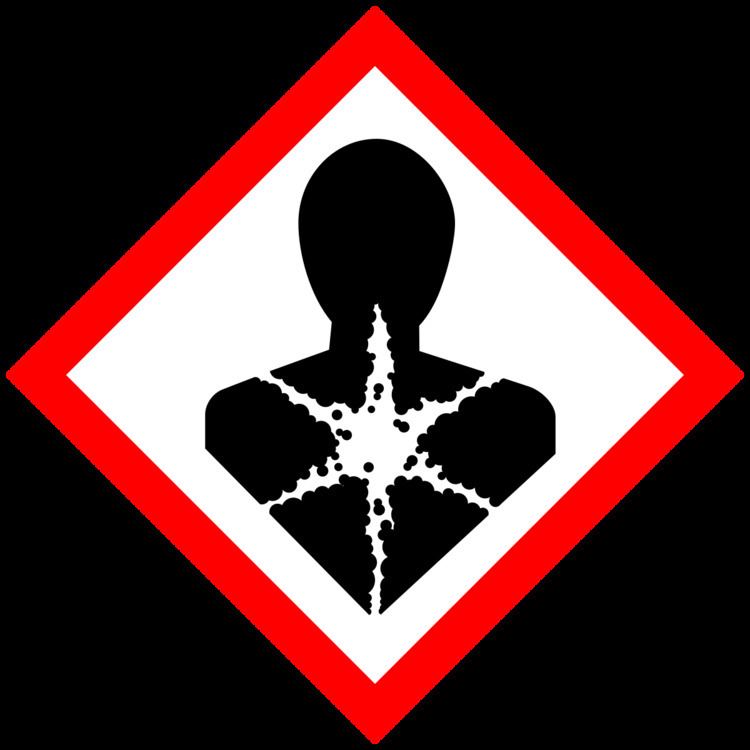 | ||
Reproductive toxicity is a hazard associated with some chemical substances, that they will interfere in some way with normal reproduction; such substances are called reprotoxic. It includes adverse effects on sexual function and fertility in adult males and females, as well as developmental toxicity in the offspring. It is usual to take a practical definition, including several different effects which are unrelated to each other except in their outcome of lowered effective fertility. The Globally Harmonized System of Classification and Labelling of Chemicals (GHS) separates reproductive toxicity from germ cell mutagenicity and carcinogenicity, even though both these hazards may also affect fertility.
One well known group of substances which are toxic for reproduction are teratogens – substances which cause birth defects – of which (S)-thalidomide is possibly the most notorious. Another group of substances which has received much attention (and some controversy) as possibly toxic for reproduction are the so-called endocrine disruptors. However, many substances which are toxic for reproduction do not fall into either of these groups: lead compounds, for example, are considered to be toxic for reproduction given their adverse effects on the normal intellectual and psychomotor development of human babies and children.
Many drugs have effects on the human reproductive system: these may be desired (hormonal contraception), a minor unwanted side effect (many antidepressants) or a major public health problem (thalidomide). However, most studies of reproductive toxicity has focussed on occupational or environmental exposure to chemicals and their effects on reproduction. It may be noted that both consumption of alcohol and tobacco smoking are known to be "toxic for reproduction" in the sense that the term is used here.
Bisphenol A (BPA) is an example of an endocrine disruptor which negatively affects reproductive development. BPA is a known as estrogen mimicker (Xenoestrogen) and a likely androgen mimicker, which is used in the production of various plastic products. BPA exposure in fetal female rats lead to mammary gland morphogenesis, increased formation of ovarian tumors, and increased risk of developing mammary gland neoplasia in adult life. Additionally, BPA affects male fertility by resulting in lower sperm quality quality and sex function. The toxicological impact of BPA is better understood and studies in females than in males.
Lead is a heavy metal that not only has been associated with mental deficits, but male infertility and male reproductive issues. Lead is believed to predominantly affect male reproduction via disruption of hormones. Through this hormonal disruption, the process of sperm production in the seminiferous tubules is reduced. Another proposed mechanism of poor semem quality due to lead exposure has been attributed to lead’s ability to cause increases in reactive oxygen species due to lipid peroxidation, leading to cellular damage.
Other reproductive toxins such as Thalidomide were once prescribed and used for therapeutic effects. In the 1950s and early 1960s, Thalidomide was widely used in Europe as an anti-nausea medication to alleviate morning sickness in pregnant women. It wasn't until the 1960s was found that Thalidomide altered embryo development and led to limb deformities such as thumb absence, under development of entire limbs, or phocomelia. The teratogenic effects of Thalidomide have been proposed to affect more that ten thousand babies worldwide.
Diethylstilbestrol (DES), a synthetic estrogen known to be another reproductive toxin, was used from 1938 to 1971 to prevent spontaneous abortions from occurring in women. DES causes carcinogenic and mutagenic effects via the production of highly reactive metabolites, furthermore resulting in the formation of DNA adducts. Individuals exposed to DES in utero suffer atypical reproductive tract formation. Specifically, females exposed, in utero, to DES during the first trimester have an increased risk of developing clear cell vaginal carcinoma, and males an increased risk of hypospadias.
